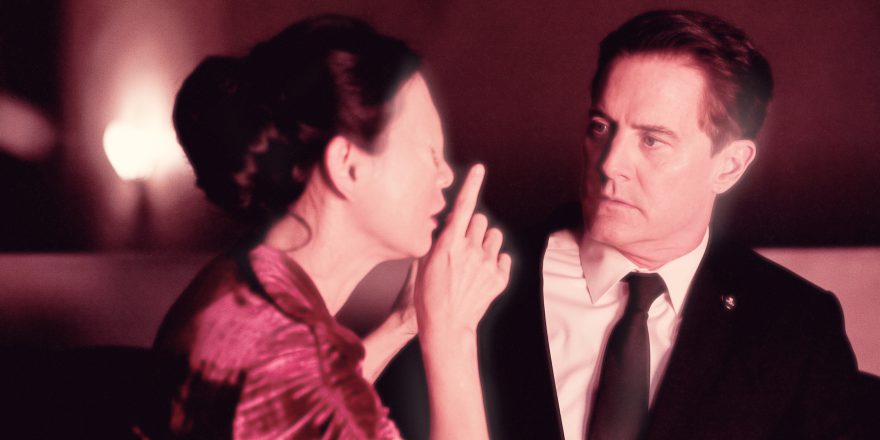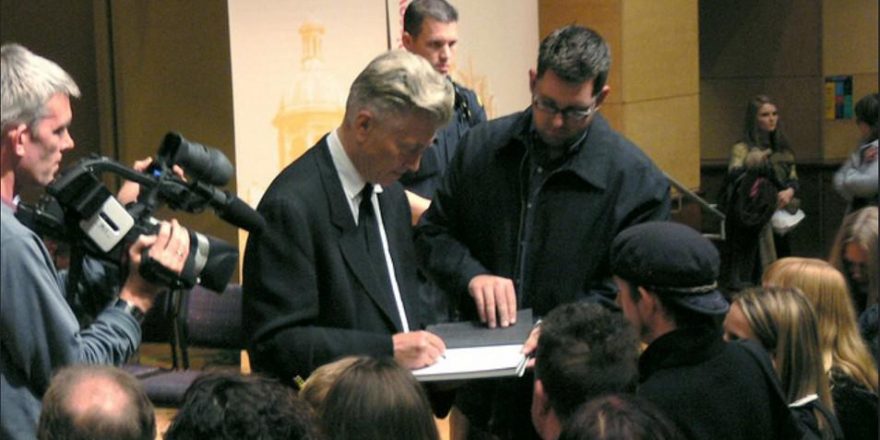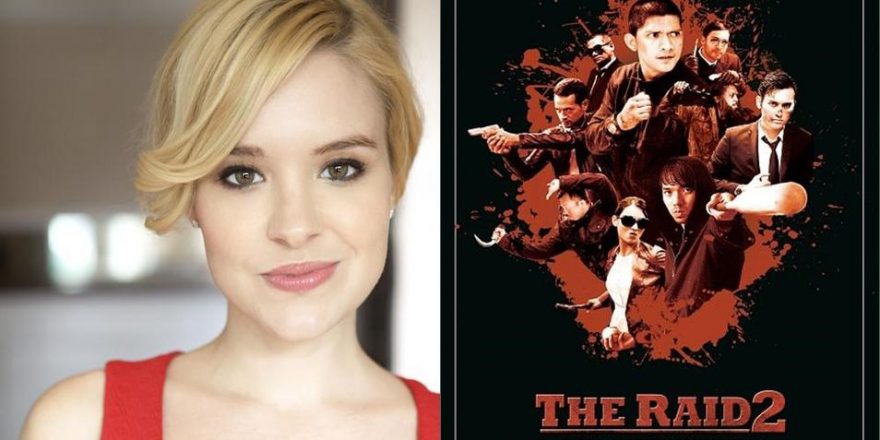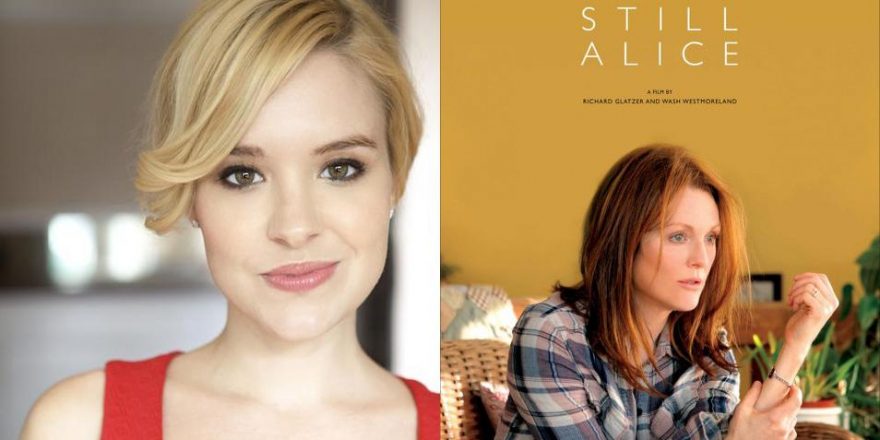Two weekends ago, I made a homemade cherry pie. My friend Mallory brought donuts. My boyfriend made coffee.
That’s right. We were ready for the return of Twin Peaks.
It was weird. It was bizarre. It was Lynch.
If “auteuring” were a verb, Lynch has been doing it since all of us gathered around my television last week were putting on plays with our stuffed animals, or maybe in the most advanced situations, figuring out how to take a great Polaroid (back when Polaroid was cool the first time around). Now most of my friends at my Twin Peaks viewing party have graduated to actual filmmaking or record producing or some other creative output and Lynch is still kicking it, doing what he does best – taking a current medium, which has changed considerably in the last 25 years, and making it his bitch.
When Laura Palmer said she would see Cooper again in 25 years (and by Cooper, I mean us because we all just wanted to be Cooper, right?), we didn’t know how different television would be when Twin Peaks returned.
It’s still in a box … but that’s about the only thing about our current boob tube that resembles the television of a teenage Laura Palmer’s time.
I won’t bore you with the repetitive acknowledgement of the “golden age of television” we are experiencing. I want to talk about the experience itself. There are the obvious things. There’s no appointment viewing. We aren’t watching commercials. We aren’t recording things on VHS or even on TiVo or DVR much anymore.
Most importantly, in the last few years, we invented a thing called television marathoning and it’s not just for people who buy the entire VHS box set of Buffy, like we did in the ’90s. Lots of shows are designed for binge watching, both ones released as big bundles and ones released week to week. I have given the following advice more than once about shows like The Leftovers and Westworld: “You should just marathon it. It’s better that way.”
And with the advent of not just binge-watching acceptance but almost binge-watching expectancy, I can’t imagine a better time for Lynch.
Binge-watching has trained the average viewer to sit for hours in front of the same television show, getting to know each character not week to week, but hour by hour. And by hour 12, I’m usually pretty sure I’m best friends with all the women on Orange is the New Black.
In the age of changing attitudes towards television, the medium is the message. Television viewing has changed and those of us who make television have to learn to change with it.Binge-watching has taught us patience. “It gets good around Episode 4,” is not an unheard of phrase for a new television show. Let me interpret that for you: you have to watch three hours of something you don’t like that much to get to something you do like. And we do. Most television shows in the past would be canceled if the pilot wasn’t good, because people would quit watching it. And yes, on network television that still happens; good shows end up on the chopping block. But with the newbs like Netflix and Amazon and so many other networks bandwagon for shows that can build slowly, premature cancellation of shows is becoming less and less frequent.
Lynch utilized the binge-watching aspect of the medium well – releasing two hours of television on the first night, and then another two hours a week later. If you know you have an expanse of television to watch, you as an audience member will sit and stare without complaint at a glass box whose meaning hasn’t been revealed to you for 10 minutes. We will watch a guy paint a bunch of shovels gold. We will watch a room float around in space. We will expect no quick reveals. Why? Because we have so much more to watch. We are trained to have patience. And Lynch has prepared us for this with his years and years of demanding patience from his viewers.
At one time in the history of television, we all would have turned it off after these episodes. Not to be sacrilegious, but come on. We got mad when there wasn’t a reveal on Lost every week. With the first two episodes of Twin Peaks, I watched a show that seems to have a tree as a main character and ended one episode with a full song in a bar while various people stared at each other.
And that’s OK. With Lynch, we don’t expect immediate answers. He requires patience. He requires faith. He is literally perfect for the binge viewer.
To prepare myself for the new season, the recaps of Damn Fine Podcast have primed me for all the callbacks and histories. (Disclaimer: Ron Richards, one of the hosts of Damn Fine Podcast, is a longtime friend, and a few years ago taught me what Uber was!) On one episode, I learned that apparently Lynch shot the 18-episode season like a film. And that’s exactly what it feels like – a filmmaker not afraid of a slow-burn.
So in this episode, we watch the shovels being delivered. Next episode, we watch them being painted. Who knows what could happen to the shovels in the next episode?! You have to wait and see!
If he did shoot it like a movie, Lynch shot all the shovel sequences together. So he doesn’t care that he’s parceling them out bit by bit. He knows where the shovel scenes are going. And we are just there to absorb them in all their shovel glory.
There’s no urgency in the show to draw us in. If we’re watching, we’re probably in. We are ready for a long shot of people staring at each other. Just like we were willing to do the same in the original series. In fact, one of my favorite scenes in the original involves a man walking slowly across a bank floor and back. If you’re a fan, you know it and probably remember it fondly as well.
So we are ready because Netflix and other bingeing mediums have prepared us but also because Lynch prepared us. There should be a disclaimer at the beginning: “You know what you are getting into.”
In the age of changing attitudes towards television, the medium is the message. Television viewing has changed and those of us who make television have to learn to change with it. Whereas at one point, auteurs were drawn to cinema, now we see shows that have one sole voice behind them and they’re pretty damn good. Mr. Robot, True Detective and Girls are obvious examples. Mindy Kaling and Issa Rae are also creating their own spaces and obviously Shonda Rhimes has been doing this since the Postal Service was popular. And those are just a few. Just google “auteurs in television” and you’ll see that everyone is doing their best to point out all the shows out there with a singular vision.
And the medium truly allows it. We’ve figured out that maybe some of these creative television decisions shouldn’t be made by the showrunner … along with the director … and the writers … and the network … and the studio … and, I guess, Jesus or somebody. Instead, we end up with rad shows like Transparent because a vision that comes from a genius like Jill Soloway driving it really thrives in the medium. It’s a way to make great art that moves people. Because Jill Soloway conceived something she knew would move people. And that’s what art is really about.
Note: I do understand that there are still network heads and studio execs to contend with. But in some of these mediums, I hear of wonderful, magical stories where they hire a creator and give them free reign. This is what I’m talking about. It’s happening. At the very least, I think it’s obvious that not too many people fussed with Lynch’s vision.
In a world where which some of the best filmmakers I know are fighting for scraps to get their films made, thank God for the medium that is pouring money into content. Sure, not all that content is great. Not all of it is designed to last the ages. But some is.
So while I guess it would have been nice to have six seasons and a movie of the original Twin Peaks, I don’t really hear any of the original fans complaining. On TV right now, we get to see creators do what they do best: create. Even if that creator desires us to watch people talk backwards, a woman with a log, and a tree with something that looks like a brain on the top of it.






